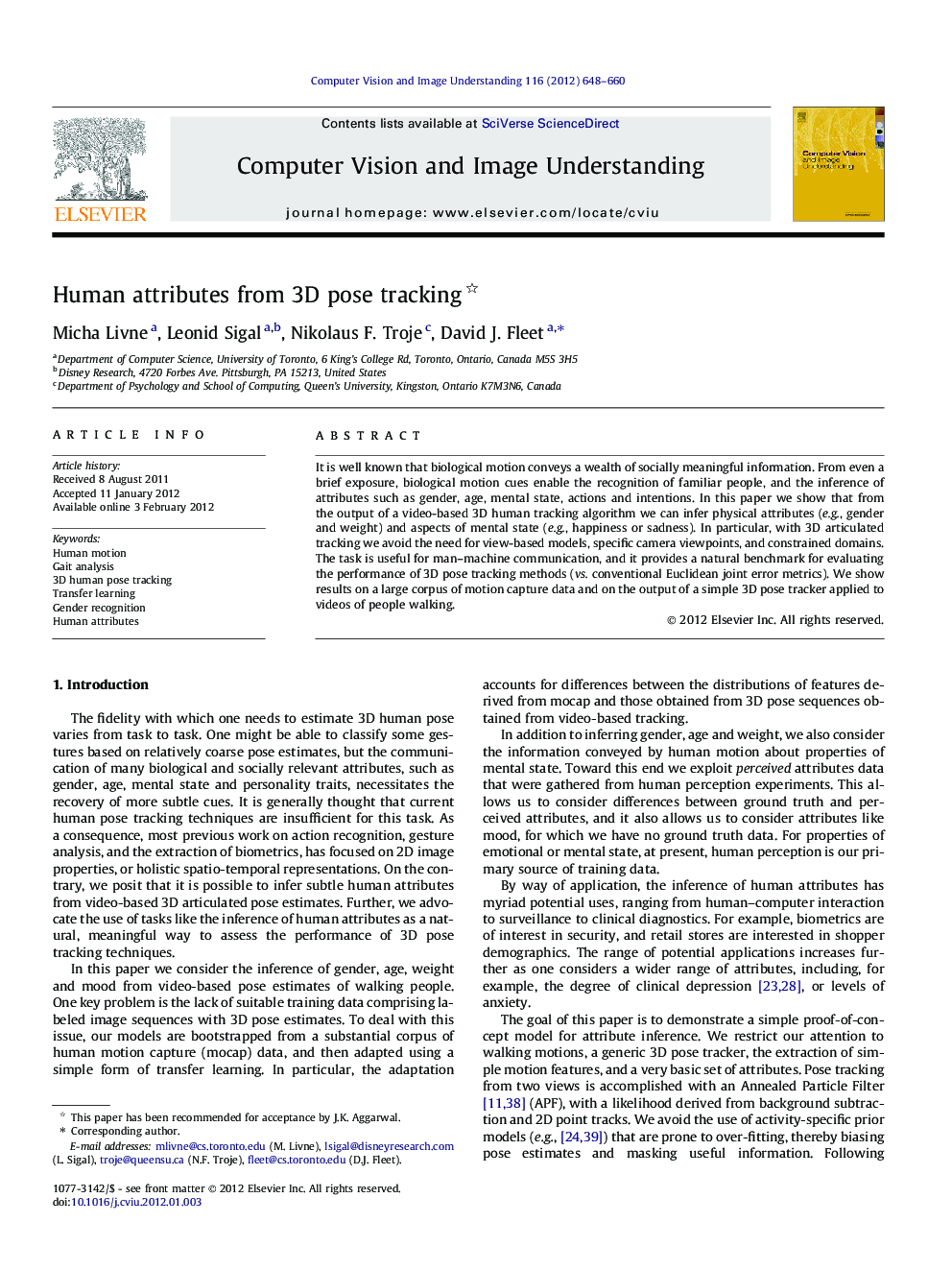| Article ID | Journal | Published Year | Pages | File Type |
|---|---|---|---|---|
| 525735 | Computer Vision and Image Understanding | 2012 | 13 Pages |
It is well known that biological motion conveys a wealth of socially meaningful information. From even a brief exposure, biological motion cues enable the recognition of familiar people, and the inference of attributes such as gender, age, mental state, actions and intentions. In this paper we show that from the output of a video-based 3D human tracking algorithm we can infer physical attributes (e.g., gender and weight) and aspects of mental state (e.g., happiness or sadness). In particular, with 3D articulated tracking we avoid the need for view-based models, specific camera viewpoints, and constrained domains. The task is useful for man–machine communication, and it provides a natural benchmark for evaluating the performance of 3D pose tracking methods (vs. conventional Euclidean joint error metrics). We show results on a large corpus of motion capture data and on the output of a simple 3D pose tracker applied to videos of people walking.
► Human attributes are inferred from 3D video-based pose data. ► Inferred attributes include gender, age, weight, and mood. ► Transfer learning is used to optimize the discriminative models. ► Good gender classification is possible, despite noisy pose estimates.
